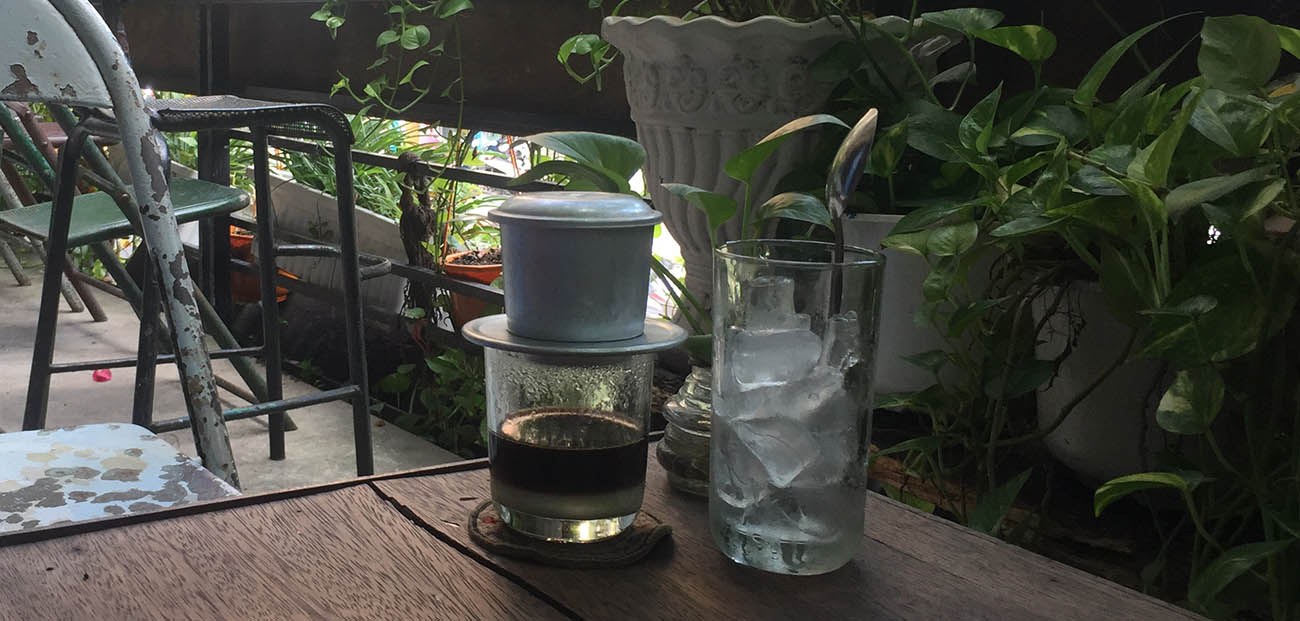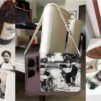
Vietnamese drip coffee – if you have tried it, you know this is not a brew for the faint-hearted. Cà phê sữa đá (the totally addictive one with condensed milk on ice) and ca phe den (black coffee) is the type of quaff that is known to give people heart palpitations a few sips in. It’s those robusta beans. They are almost twice as strong as their tasty, more refined siblings of the arabica variety, which make up your lattes and flat whites, dahling.
Coffee culture was introduced to Vietnam by the French (surprise!) in the mid-1800s. Like all good colonizers (tongue-in-cheek there), the French were keen to replicate their former lives in their new homes in the East. A snag was hit however when it came to the fresh milk aspect they craved for their coffee. A very limited dairy industry combined with a lack of refrigeration in Vietnam resulted in fresh milk simply not being available. Enter stage right: shelf life-friendly cans of sweet milk developed by a New Yorker. By importing this condensed milk from the US, the French were able to create a coffee to their taste. And the rest, as they say, is now Vietnamese culinary history.
Fast forward 180 years later and Vietnam is now the largest producer of the Robusta coffee and the second largest producer of coffee worldwide. And while many of the little street side drinkeries are being replaced by cafes, from the simple fold-up chair type to fancy as your pants would like, the coffee business is BOOMING in Vietnam. Given ongoing concerns about the coffee quality at local street side cafes, this is perhaps not such a bad thing. And regardless of which café you go to, you can still always indulge in a glass of cà phê sữa đá, even in the fancier establishments around town.
I know of an Australian man who would quaff eight glasses of cà phê sữa đá each day during his time in Ho Chi Minh City. Eight! It’s the stuff of legends. Strong heart and nerves of steel, I’d say. It’s a little wonder there isn’t an alarming rate of ca phe sua da addictions amongst university students the world over, in need of a hit to get through their all-nighters. I just get the jitters thinking about it.
And yet in complete contrast to the inevitable caffeine jolt this brew delivers, the coffee brewing process is nice and slow. This is helped along by the phin, the ubiquitous metal drip filter which allows the coffee to oh-so-slowly drip through to the glass beneath. Add the coffee grounds. Tamp. Pour in a little hot water. Wait. Fill the chamber with more. Wait again. Preparing the coffee this way forces the imbiber to slow down – to sit, ponder the world, have a chat, and basically pause for a few minutes while the thick liquid languidly drips into the glass.
The phin is typically made from aluminum, as found at your typical street side coffee stall, or stainless steel and consists of a round perforated plate that fits and sits over a glass; a brewing chamber, that sits on top of the plate; a perforated metal tamp that sits on top of the coffee grounds inside the chamber; and a lid to seal the heat.
Capture your cà phê sữa đá memories with one of our Coffee O’clock, Vietnam-style tea towels available at Collective Memory in Hanoi or on our website.
Information sources:
The History of Coffee in Vietnam
The Vietnamese Coffee Tool That Lets You Take a Breather
What’s Really in Your Ca Phe Sua Da
#caphesuada #capheden #caphedenda #vietnamesecoffee #vietnamesefiltercoffee #caphephin #indochine #vintagevietnam #livinginvietnam #teatowel #asianinspiration







Pingback: The Lotus – Sacred, Symbolic and Sustaining - Very Ngon Homewares